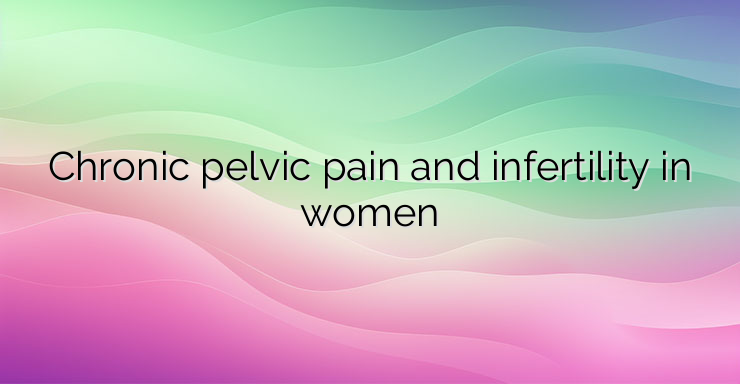Chronic pelvic pain is an indicator of endometriosis, pelvic adhesions and infertility. Pelvic pain can be caused by various diseases related to the gynecological, gastrointestinal, excretory or musculoskeletal system. In addition, some types of pain have no apparent physical cause and are therefore believed to have a significant psychological component. Data from large studies show that gynecological problems are responsible for only 20% of chronic pelvic pain. Some gynecological causes of pelvic pain include: Endometriosis. This is a condition where the cells of the uterine lining are found outside the uterus. Some women with endometriosis may have no symptoms, while others experience significant pain and problems conceiving. Pelvic inflammatory disease. Certain types of pelvic infections can lead to chronic pelvic pain. The infection can involve the uterus, fallopian tubes and ovaries and cause symptoms such as pain, abnormal uterine bleeding, fever and chills. The infection can also cause adhesions (connective tissue) to form around the pelvic organs, which can also lead to chronic pelvic pain. Adhesions. They can appear after infection, surgery or as a result of endometriosis. There is growing evidence that adhesions, especially dense whitish tissue, can cause pain. Adenomyosis. Adenomyosis is similar to endometriosis in that the disease is characterized by the presence of cells of the uterine lining outside the uterine cavity. While in endometriosis the affected areas include organs in the pelvic cavity (ovaries, tubes, intestines, pelvic lining, etc.), in adenomyosis the endometrial lining actually grows into the muscle layer of the uterus. Fibroids. These benign tumors that develop in the muscle layer of the uterus are the most common pelvic tumors in women. Fibroids most commonly cause painful menstruation (dysmenorrhea), but can also cause abnormal vaginal bleeding, pain during intercourse, and/or abnormalities in bowel or bladder function. What qualifies as chronic pelvic pain? If the pelvic pain lasts for six months or more, it is considered chronic pelvic pain. Chronic pelvic pain does not necessarily mean that the pain has lasted every day for six months. Whether the pain is constant, varies with the menstrual cycle, or simply comes and goes over a six-month period, these are conditions that warrant investigation for chronic pelvic pain. Some treatments for pelvic pain can also affect a woman’s ability to get pregnant. For example, oral contraceptives are commonly used to treat endometriosis. A hysterectomy, which is surgery to remove a woman’s uterus, may be an option for women who are not helped by other treatments, but it makes pregnancy impossible. References: 1. American Society for Reproductive Medicine. (2012). Endometriosis:Does it cause infertility? 2. American Society for Reproductive Medicine. (2008). Adhesions: What are they and how can they be prevented?


Leave a Reply